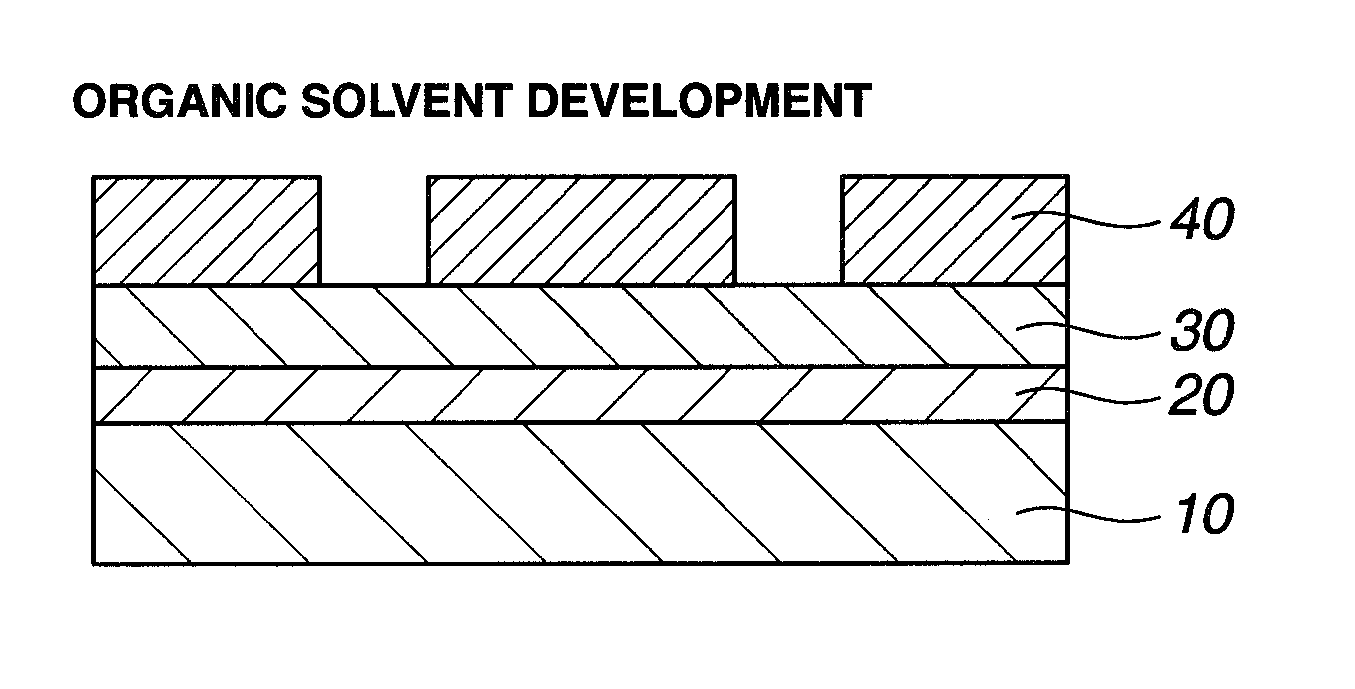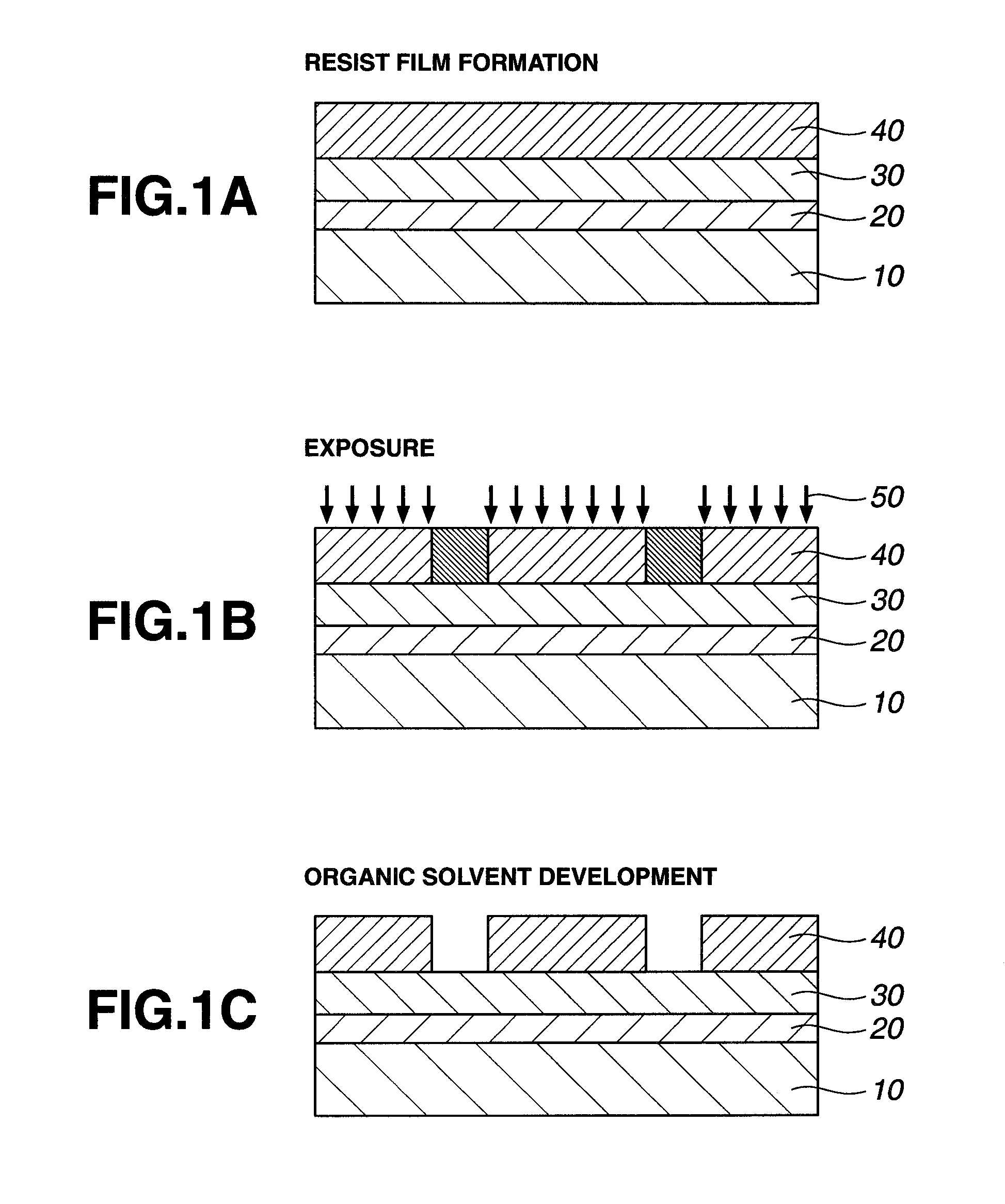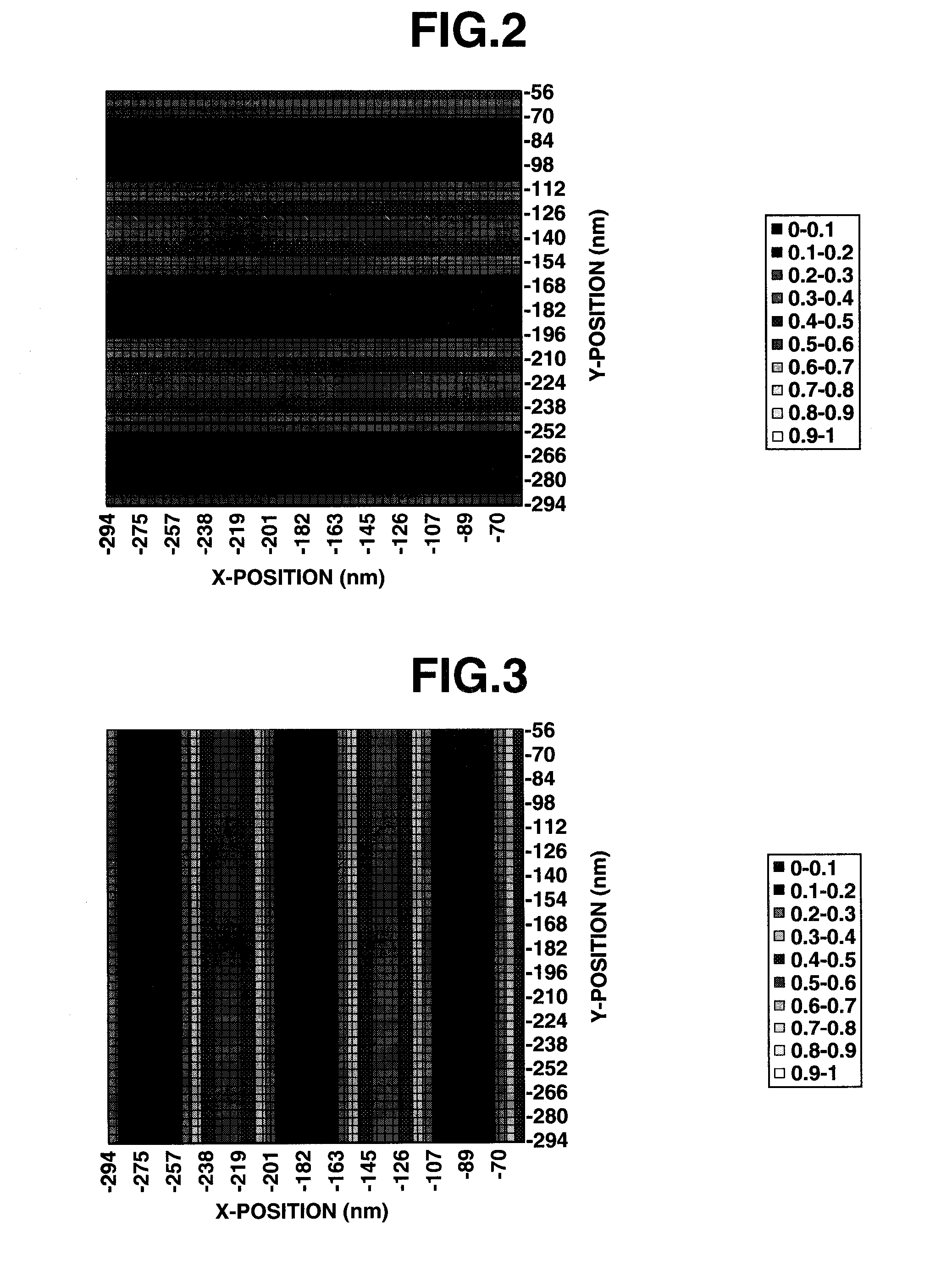Patterning process
a pattern and pattern technology, applied in the field of pattern pattern formation process, can solve the problems of low resist etching resistance, low etching resistance of scanner, abandonment of development of this technology, etc., and achieve the effect of improving the resolution of fine trench or hole pattern, high dry etching resistance, and high dissolution contrast in organic solvent developmen
- Summary
- Abstract
- Description
- Claims
- Application Information
AI Technical Summary
Benefits of technology
Problems solved by technology
Method used
Image
Examples
example
[0162]Examples of the invention are given below by way of illustration and not by way of limitation. The abbreviation “pbw” is parts by weight. For all polymers, Mw and Mn are determined by GPC versus polystyrene standards using tetrahydrofuran solvent.
Preparation of Resist Composition
[0163]A resist solution was prepared by dissolving components in a solvent in accordance with the recipe shown in Table 1, and filtering through a Teflon® filter with a pore size of 0.2 μm. The polymers as base resin in Table 1 have a structure, molecular weight (Mw) and dispersity (Mw / Mn) as shown in Tables 2 to 5. In Tables 2 to 5, the value in parentheses indicates a constitutional ratio (mol %) of the relevant recurring unit. The structure of photoacid generators in Table 1 is shown in Table 5. The structure of quenchers in Table 1 is shown in Table 6.
[0164]It is noted that in Table 1, Resists 1 to 18 correspond to resist compositions used in the inventive process and Resists 19 to 24 are comparati...
PUM
| Property | Measurement | Unit |
|---|---|---|
| wavelength | aaaaa | aaaaa |
| wavelength | aaaaa | aaaaa |
| transmittance | aaaaa | aaaaa |
Abstract
Description
Claims
Application Information
 Login to View More
Login to View More - R&D
- Intellectual Property
- Life Sciences
- Materials
- Tech Scout
- Unparalleled Data Quality
- Higher Quality Content
- 60% Fewer Hallucinations
Browse by: Latest US Patents, China's latest patents, Technical Efficacy Thesaurus, Application Domain, Technology Topic, Popular Technical Reports.
© 2025 PatSnap. All rights reserved.Legal|Privacy policy|Modern Slavery Act Transparency Statement|Sitemap|About US| Contact US: help@patsnap.com



